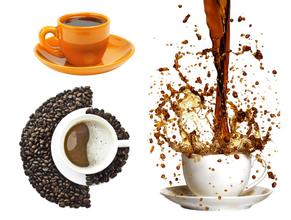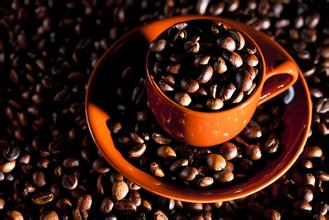Description of the taste and flavor of Robska coffee beans
Description of the taste and flavor of Robska coffee beans
Compared with the appearance of Arabica coffee raw beans and Robusta coffee raw beans, the difference is quite obvious. Arabica is longer, flatter, more complete and greener; Robusta is more round, thicker and whiter. Both varieties of coffee trees need plenty of sunlight and water. Arabica coffee trees like the seasonal climate of 15: 24 ℃, while Robasta coffee trees like the warm equatorial climate. The temperature in this area is stable in the range of 24-29 ℃. When the temperature drops below zero, both kinds of trees will freeze to death. Volcanic soil is the favorite soil for coffee trees, which provides almost all the nutrients for coffee trees to grow. In addition to the necessary temperature, humidity and altitude, it is also an important indicator of coffee growth. Robasta is generally grown in lowlands about 500 meters above sea level, while Arabica is suitable for highlands between 800 and 2000 meters above sea level.
Robusta has a unique aroma (known as "Rob flavor", some people mainly because of musty smell) and bitterness. If 2% of the coffee is mixed with other coffee, the whole cup of coffee will become Rob flavor (therefore, Robusta coffee beans can not be drunk as individual coffee beans).
Its flavor is so bright and strong, but if you want to taste it directly, you have to be prepared.
In general, robusta coffee is used in instant coffee (which extracts about twice as much liquid as Arabica), canned coffee, liquid coffee and other industrial coffees.
Its caffeine content is much higher than that of Arabica, about 3.2%.
In the general coffee market, many people like to compare robusta and Arabica coffee beans, which is incorrect.
In fact, the Robusta species was originally a mutant of the Congo species (scientific name: Coffee Canephora), and it should be compared with the Alabica species.
Today, however, the Robusta species is commonly used by ordinary people, and it is not known that it is actually a variant of the Congolese species. Arabica coffee beans grow at colder high elevations in the tropics, but at high temperatures and low elevations that are not suitable for Arabica

Important Notice :
前街咖啡 FrontStreet Coffee has moved to new addredd:
FrontStreet Coffee Address: 315,Donghua East Road,GuangZhou
Tel:020 38364473
- Prev

Geisha coffee bean flavor description taste producing area manor detailed introduction to geisha how much is a cup
Geisha coffee bean flavor description the taste of the region manor detailed introduction to the invincible, invincible halo, the jade estate geisha has become a dream escape of the coffee industry, its flower fragrance is like fireworks, constantly blooming in the mouth in the process of drinking, with lemon, citrus, strawberry-like juice, making it like juice rather than coffee. A geisha coffee fan once said: yes
- Next

Introduction to the flavor description of coffee bean varieties and grinding-grinding relationship in the region
Coffee bean varieties and grinding relationship regional flavor description taste introduction coffee beans once ground too fine, water and coffee powder surface contact too much, will extract too many unnecessary impurities, even bitter beans out; but if the grinding is too thick, the delicacy is still hidden deep inside, in the hot water can not touch the place, the brewed coffee will not have enough aroma. Boiled Italian concentrate
Related
- Guji coffee producing area of Guji, Ethiopia: Humbela, Shakiso, Wulaga
- What is the most expensive variety of Qiloso in BOP multi-variety group?
- How to store the coffee beans bought home?
- Why are Yemeni coffee beans so rare now?
- Ethiopian Sidamo all Red Fruit Sun Sun Santa Vini Coffee beans
- SOE is mostly sour? What does it mean? Is it a single bean? what's the difference between it and Italian blending?
- Is Italian coffee beans suitable for making hand-brewed coffee?
- How to choose coffee beans when making cold coffee? What kind of coffee beans are suitable for making cold coffee?
- Just entered the pit to make coffee, what kind of coffee beans should be chosen?
- Can only Japan buy real Blue Mountain Coffee? What are authentic Jamaican Blue Mountain coffee beans?

